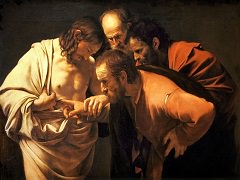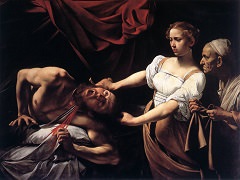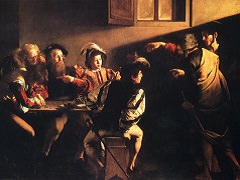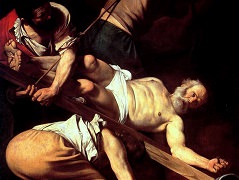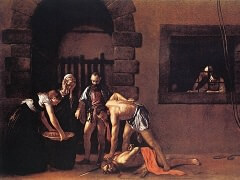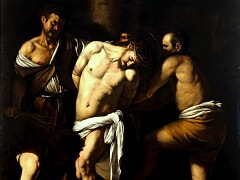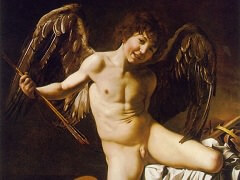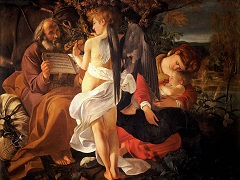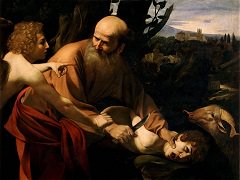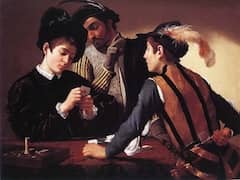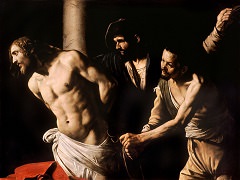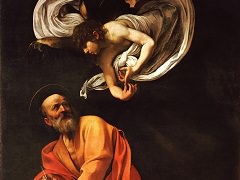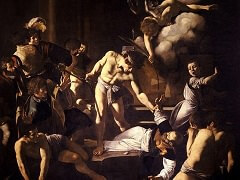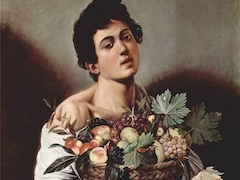Saint Jerome Writing, 1605 by Caravaggio
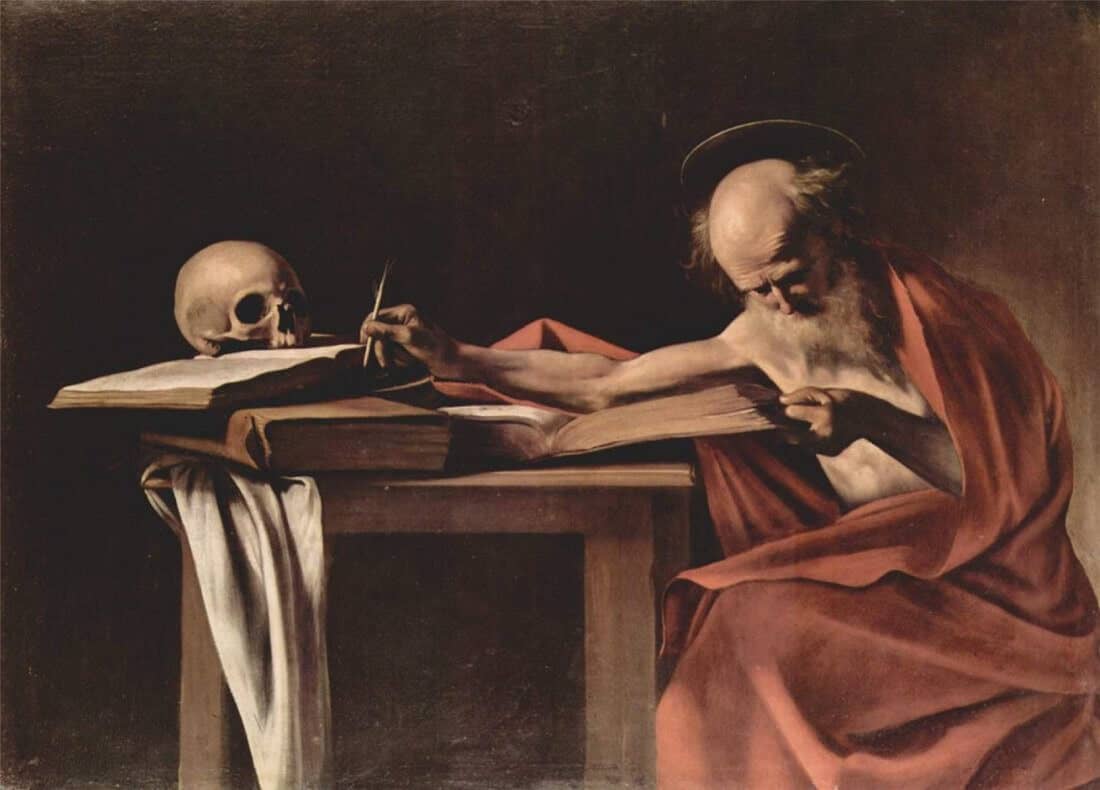
St. Jerome Writing was painted, according to Bellori, for Pope Paul V's nephew, Cardinal Scipione Borghese, who only arrived in Rome in the summer of 1605, but rapidly became a keen collector of Caravaggio's work. Obviously the model was the same as that for the Montserrat St. Jerome, but the handling of the paint is here much more fluid, especially in the head, face and left hand. Such a feature could either be interpreted as an exuberant, incipiently Baroque moment in Caravaggio's development or possibly as a sign that the work was, in fact, unfinished at the time of his flight from Rome in the summer of 1606. A similar, though slightly less marked, quality is discernible in the contemporary Ecce Homo. The conception of St. Jerome Writing is itself a remarkable achievement in which composition and subject-matter strongly reinforce each other: the aging saint, feverishly concentrating on what he has written, absent-mindedly stretches out a sinewy arm to the ink well on the far side of the table and, in so doing, indicates the skull, a reminder of death which observes him, symmetrically, in his very struggle to overcome it.

